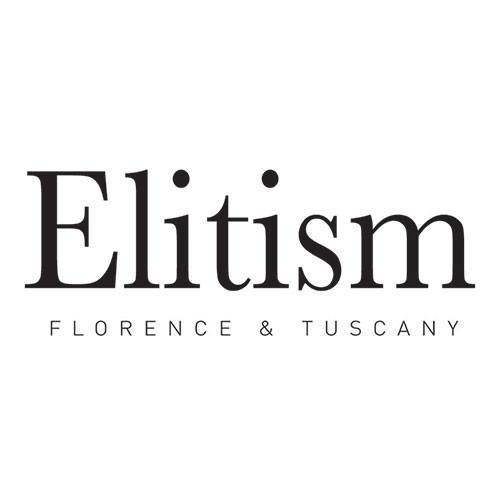“Palazzo Strozzi hosts a major exhibition dedicated to one ofthe most controversial figures in contemporary art. A look at the unique season of creativeness in the former Yugoslavia during the 70’s is a key to understand her work and her artistic background.”
Marina Abramović is one of the greatest performer in the world. Her famous shows have been appreciated in so many countries in Europe and in North America and has been giving prestigious awards. Her extreme performances started at the Novi Sad Academy of Fine Arts in the 70’s, at that time former Yugoslavia experienced a decade of original and appreciated artistic production called “Conceptualism”.
The fact that this type of radical art could be produced in an authoritarian socialist country is perhaps as interesting as the art itself. How was it possible?
During the famous demonstrations of’68, students occupied the University in Belgrade too. They stayed there for a week and there were serious riots with the police. The students asked for civil and economic reforms and proposed a new discussion about the Yugoslavian way of Socialism. They also refused the patriarchal family system and women advocated for their role in the society. The students found an unexpected but influential ally: Marshal Tito. The president made a speech on tv: he sympathized with the students and promised better conditions for them.
So Yugoslavia experienced a season of new freedoms like no other Socialist country ever: new debates in the press, the political dissidents tolerated and the students were allowed to attend universities in Western Countries. The Party also supported artists with a fund in their favor without demanding the spreading of propaganda in return.
In that favorable climate, a new generation of artists emerged thanks to more physical spaces to work and the chance to invest their talent creating art and receiving an income for it.
It was a Golden Age for art: from film to theater, from paintings to writings, several appreciated works were created at that time. Some artists were dissident but the Party tolerated them because they gave prestige to Yugoslavia amongst Western Countries. Most of those creative personalities were performers. The Yugoslavian art scene was called “Radical”: they wanted to shock the audience doing so by reflecting the contradiction of Yugoslavian society, from the political reforms to the economic situation of the country, that hang in the balance between consumerism and socialism.
Notable artists were Serbian performers called The Belgrade Six with Marina Abramović as one of the members, Croatian feminist performer Sanja Iveković, Slovenian feminist punk band Tozibabe, Goran Bregović and his Sarajevo-based hard rock band Bijelo Dugme, Slovenian collective of film makers OHO Group, Slovenian collective of poets Pupilija Ferkeverk, Croatian photographer and visual artist Tomislav Gotovac and a Slovenian provocative group of designers best known as New Collectivism movement. A group of filmmakers reinvented Yugoslavian cinema. Their movies are known as The Black movementfor their pessimistic views and their valorization of anarchy. Far from being underground or countercultural works, they had a degree of official government support, even though the results sometimes were stopped by the censorship or in other case got their producers into trouble.
The common theme for all the Radicalism artists was its criticism of the Party’s “Third Way”, its idea of self-management society: Yugoslavia was a country where certain books were banned by censorship but where you could buy magazines such as Playboy, a country where some people lived thanks to vouchers to buy milk and bread (as in every other Socialist regime) but where you can also find Western-style supermarkets. These artists first understood that all these contradictions would be dangerous for Yugoslavia, which was unable to reform itself as a democracy with a marked-oriented economy. A few years later, when Socialism collapsed at the beginning of the ‘90s the country imploded too.
To have an idea about what kind of performances they produced at that time we can mention two radical examples. Slovenian cinematographer Karpo Godina of the OHO Group produced psychedelic films which embraced the hippy and drug culture. His films described different stages of existence: ‘life’, ‘death’, ‘dictatorship’, and finally, ‘swallow LSD’. Godina lauded hallucinogenic drugs as the truth in a controversial society without real civil rights but riddled with consumer culture. The liberation of the mind was used to signal a desire for political transparency.
Sanja Iveković, instead, was even more radical with her 18 minutes feminist performance called theTriangle. It took place in 1979 during president Tito’s visit to Zagreb. Triangle was a protest on the oppressive female reality under the dictatorship. In an act of defiance against a law that banned people from sitting on balconies during Tito’s presidential visits, Iveković positioned herself on the balcony of her apartment, with a book and a glass of whiskey as she simulated gestures that appeared as if she was masturbating while the presidential motorcade was passing by. It wasn’t long before the artist stirred the reaction she was hoping for and was ordered inside by the officials!
Amongst them was Marina Abramović, who had the most notable success. She was a student at the Academy of Fine Arts in Belgrade from 1965 to 1970. After graduating she taught at the Academy of Fine Art in Novi Sad, while creating and later performing her first solo performance called Rhythm from 1973 to 1974. The most famous part of this performance was a six hours show where she had a completely passive role in front of the audience: Abramović placed on a table 72 objects that people were allowed to use on her in any way that they chose. Some of these were objects that could give pleasure, while others could be wielded to inflict pain, or to harm her. Two of these 72 objects were a gun and a bullet. Initially, members of the audience reacted with caution and modesty, but as time passed (and the artist remained passive) people began to act more aggressively. This performance became more dangerous as time passed. One spectator used a knife and cut her noose, then he drunk her blood. Another even pointed the gun at Marina’s head incited a fight amongst spectators!
She moved to Amsterdam in 1976 and then started to perform Rhythm across Europe. In this performance wanted to push her body to the limit of risking to die on stage. She reached the purpose of demonstrating that the audience’s interaction could be without limits too.
Hippy rebellion and sexual liberation could seem naïve today, but they were used as a signal to a greater cultural openness and transparency in a country that was at crossroads: to reform itself or to go back to the hard line of Communism. It choose none of the two. In the end by the 80’s the country gradually entered in troubles led by ethnic hatred and nationalist revivals drifted Yugoslavia towards civil war, despite the first democratic elections and the road map to becoming an EU member. In 1997 Marina Abramović won the Golden Lion Award at the Venice Biennale with Balkan Baroque, a six hours living exhibition that denounced the civil war in her country. In this performance, a metaphor for ethnic cleansing, the artist had a pile of dirty cow bones on stage and removed the last vestiges of flesh and cartilage by brushing. In the end, Yugoslavia no longer exists, yet the art it produced continues to resonate and it has plenty to say about the political usefulness of culture today.
Francesco Sani

